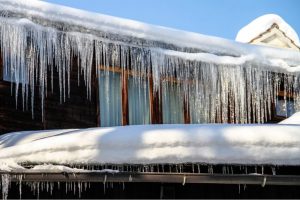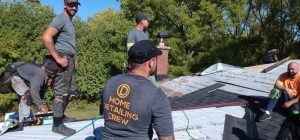How to Protect Your Home from Flood Damage?
May 29, 2023

Water damage is one of the worst things that can happen to your home – not only can the initial flood of water cause problem with electrical systems and damage to property, but moisture can also settle into the walls or other structures in the house and cause problems in the long term. Concurrent with the recent bad weather in British Columbia and Quebec, thousands of homes have been affected by heavy rain and flooding. Over 4,000 homes were affected in Quebec alone, with hundreds more suffering damage in BC.
It’s still too early to get an estimate of the cost of the flooding – but the worst floods in recent Canadian history, in Alberta in 2013, cost $1.7 billion in insured damage. So what can you do, aside from investing in flood insurance, to ensure that your home is as well protected against the raging elements as it possibly can be? (And speaking of flood insurance, it’s not usually a good idea to play the odds; 20% of flood insurance claims actually come from areas where flood risk is low.)

Dry on Top
One way to prevent heavy rainfall from damaging your home is to make sure that your roof is adequate to the task. Regular roofing maintenance is important to ensure that everything stays dry! And the main cause of a leaky roof is cracked or loose roof shingles, which can blow off during high winds, allowing water to trickle or flood in. If enough water enters, your attic may flood, water could enter your living areas, and interior walls might sustain significant damage – which will end up being quite costly.
Maintaining your gutters and eavestroughs will also help with this, as blocked gutters can cause water to back up and flow over your roof away from specialized drainage pathways. Water can either enter through the roof or seep into your house’s foundations. Gutter covers can help with this, but even if you have them, you should clean the gutters at least twice a year.
Keeping your roof clear of moss, algae and debris is essential as allowing them to build up can mean that they will undermine or penetrate shingles, leading to structural damage, water infiltration and mold. Also, if you are planning to replace your roof, consider a runner underlayment – it will extend the life of your roof by providing a much more waterproof barrier between your roof decking and your shingles.
Dry All Round
Of course, the roof isn’t the only place where water can enter your home. Water pooling close to your house can cause leaks into your basement or downstairs living areas, so ensure that patios, sidewalks, driveways and decks have not shifted as the years have gone by to allow this (and also that your lot is properly graded). Minimizing soil erosion by landscaping your gardens will also help water to be absorbed by your yard rather than pooling – as will clearing snow away in winter.
It’s no good having clean gutters if your downspouts drain to an area where the water can just flow into your house! Make sure they do not drain towards your home – and make sure that your foundation drain is in good working order to catch any stray water that does get too near the building.
Last Minute Protection
With waters rising and evacuation imminent, you can protect your possessions and your home from the worst of the damage by turning off the electricity at your home’s main electrical panel. You should also try to raise furniture, electronics, rugs and other belongings to higher levels in the house, and especially try to get them off the ground floor.
You should also anchor and raise any outdoor appliances (such as air conditioners, generators and fuel tanks) on concrete blocks if necessary, for the best chance of ensuring that they are not swept away by rising flood waters. And if you have a little time, and a rainstorm is coming, now’s when you should be ensuring that your downspouts and gutters are clean if you didn’t get around to doing this previously! This will minimize the water runoff that you will have to deal with when the rain has stopped.
For more information, speak to a roofing contractor in your area. If you have any roofing questions you’d like to ask us please don’t hesitate to call us at (905) 387 3000 or contact us using the contact form on our website. We’d love to hear from you!





